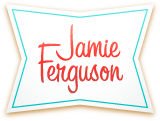Versions of Alice – Guest Post by DeAnna Knippling
I met DeAnna at a writing workshop on the Oregon Coast a few years ago. We read each other’s short stories for one assignment, and hers was so well done I got all the way to the end before I remembered what I was supposed to be doing and had to start over. DeAnna recently…
